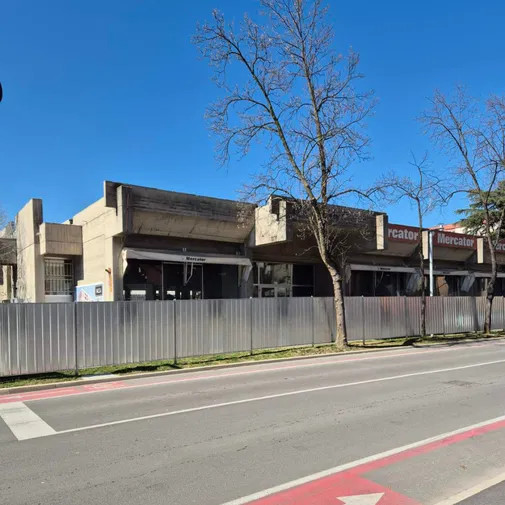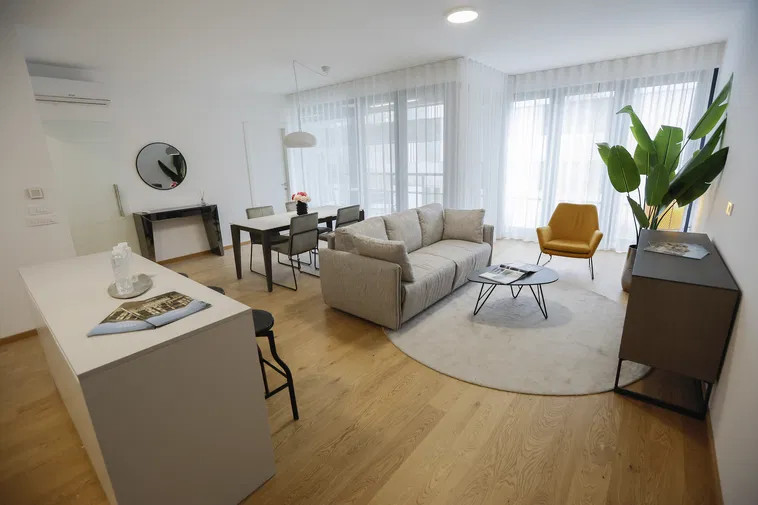Real estate and construction are definitely causing more headaches than companies in the manufacturing or food sectors”
Published on 7 june 2016Real estate and construction are definitely causing more headaches than companies in the manufacturing or food sectors”
Imre Balogh is currently running the Bank Asset Management Company (DUTB d.d.) as CEO and Executive Director. The merged entity manages around €1.6 bn of predominantly distressed assets of large corporates and SMEs. According to Balogh, the majority of investor interest comes from Europe and from international financial investors focusing on the region.
DUTB is focused on facilitating the restructuring of banks, running the privatisation process and the settling the state's liabilities. Which financial institutions (e.g. investment banks, private equity houses, corporations...) are the most interested in your assets?
We have different types of investors for different types of assets. We have financial investors looking for yield, there are real estate specialists and strategic investors who are interested in a specific type of either assets or usually a whole company, because they can strengthen their regional position, adding a new line to their product range, etc. Geographically, the majority of investor interest comes from Europe. DUTB already has investors from Germany, Austria and Italy amongst others, however, often the subsidiary or strategic partner, which is already based in Slovenia, is interested in investing. In addition, we also have investors from global financial centers where abundant capital and talent are seeking new opportunities here nevertheless, we compete with many other institutions to attract their attention, because they are investing across many countries in Central and Eastern Europe.
You said that the assets started to sell at a time when market conditions had stabilised. How long are you willing to wait for the "right moment"?
There is no uniform moment for each and every asset. We have to separate two different basic classes of assets. First, there are several companies that are not viable in terms of their production/sales or they are already in legal procedures such as bankruptcy. In such cases, the timing is determined by legal procedures and expressed interest from investors. A completely different approach applies if the companies are viable but financially distressed, in most cases they need operational restructuring as well and, for them, the options are broader. In these situations we wait in a way and actively manage the case in that we put requirements and milestones as to what kind of improvements should be achieved. Through these restructuring measures, there is the possibility to significantly increase the value of a company. To give you an example: the restructuring of Avtotehna group, financial as well as corporate governance restructuring, enabled healthy operating companies to develop. And one of them, Swatycomet, was sold for a price that exceeded even the optimistic expectations because their performance improved a lot during the restructuring process and, as it was secured in a competitive bidding process, investors were willing to pay a reasonable price for it.
I have to also mention, that there are some discussions in Slovenia as to why sell restructured distressed debt before full repayment at discount to contractual value. I would say that if full repayment at the end or refinancing will happen then it means that the restructuring was really successful, but DUTB cannot take the companies in most cases to that phase, the last step usually can be secured by the final investor who can further contribute to the development of the company with capital and resources beyond DUTB's reach. In addition to that we have the legal obligation to sell min. 10% of our assets every year and that is the main source of the repayment of our liabilities. Therefore it is crucial that we secure a constant cash flow.
Which valuation methods do you use and how much importance do you put on the discount rate? Which components are included in the discount rate?
DUTB's financial accounts are entirely based on fair value accounting, which means that we regularly reassess the fair value of every single asset. We use the so-called binominal real option pricing model, which means that, for the cases where we deem a company viable, the first step is the assessment of the possible outcome of the restructuring (financial and operational). Then we assess the existing value of the underlying collateral assets. Finally, we assess the probabilities of the outcome of the above operations. This probability distributions at the same time substituting the risk element of the discount rate. The other method could have been that, through an assessment of the risk, we would include risk premiums into the discount rate. However, we chose the first approach where the discount rate reflects only the time value of money which is changing every year, while the risk is expressed as the probability of the alternative scenarios in the model.
Regardless of the method, do you strive to reconstruct companies before they are sold and how much time do you spend on this? Is the process conducted with potential partners?
There is no one-fits-for-all solution. DUTB's portfolio, before the mergers of Probanka and Factor Banka, consisted of around 560 debtors, of which 450 were recovery cases where the primary aim is selling the assets behind the claims or the claims themselves, and majority of them are already in legal procedures, basically in bankruptcy. On the other hand, we are talking about 110 restructuring cases but, in terms of value, the restructuring cases are more than half of our portfolio. Out of these, the time needed for reasonable restructuring is very different. Some are put in the pipeline relatively early - in a couple of months, half a year and so on. And there are cases where the restructuring process takes from one to three years. We usually do not have cases where future investors are already involved in initial phases of restructuring, as we do not want to grant exclusivity to anyone, rather we run competitive process in every single case.
When selling the companies, do you put in place certain requirements such as maintaining personnel?
The ultimate requirement of DUTB is that we return on taxpayers' investment as much as we can, which means that our ultimate target is to maximise these revenues. We also have to take into account that Slovenia, as a member of the EU, signed a number of international agreements, securing the free flow of capital, goods, etc. and so, in such a framework, any kind of restrictions could be only exceptional and have a limited time until when they can be effective. When we talk about players competing in international markets, and Slovenia is a small and integrated open market, any constraints that hinder long-term competitiveness are practically non-viable. Moreover, DUTB is now obligated even by law to observe state aid rules. My opinion is that the best way to secure jobs in a sustainable way is by transforming the business and operational model of the enterprises into a very efficient and competitive one.
Although the companies are small from an international point of view, from the Slovenian perspective we are talking about strategic companies with significant importance for the country and, for this reason, should there be other requirements taken into consideration?
In the private sector, there is a notion of shareholder value and the general understanding of it is that there is a more complex assessment of performance then just short-term profitability itself. But ultimately, the target of the business and the measure of success is long-term sustainable return on investment. DUTB is in the public sector and applying that analogy we may take into account various aspects, but only to the extent that it does not endanger the maximum recovery of the investment by the taxpayers. The social aspects should be taken care of with that framework.
What is your preference; the highest payment immediately or do you consider also the potential long-term strategic opportunities?
In cases of the recovery of assets, the criterion is obviously achieving the maximum financial return, taking into account also the time value of money. I would not say immediate is always the best because, for a number of assets, especially in the real estate segment, it can happen that waiting, even if you apply the discount factor for the future revenue from the sale, is worthwhile because the price may increase. For single sales the optimal timing is when the time value of money is at the maximum. For viable companies, if there is significant risk down the road in the restructuring process, then a faster sale is more advantageous for DUTB. In the other cases, when we can secure the right framework for fundamental restructuring, it is the best to realise most of the upside ourselves. As an example the sale of Pivovarna Laško shares resulted in a huge profit for all participants, because it was the right restructuring process and the right timing.
Which assets (e.g. industries, companies, real estates, etc.) are the most problematic for you to manage?
Real estate and construction are definitely causing more headaches than companies in the manufacturing and food sectors. Also relatively difficult are holding companies, either financial holdings or partial holdings with operational activities. Usually they are at the apex of complex groups where there are many cross-ownerships, cross-guarantees and so it is difficult to identify and measure the value, and cut through the opaque structures.
Source: SloveniaTimes


